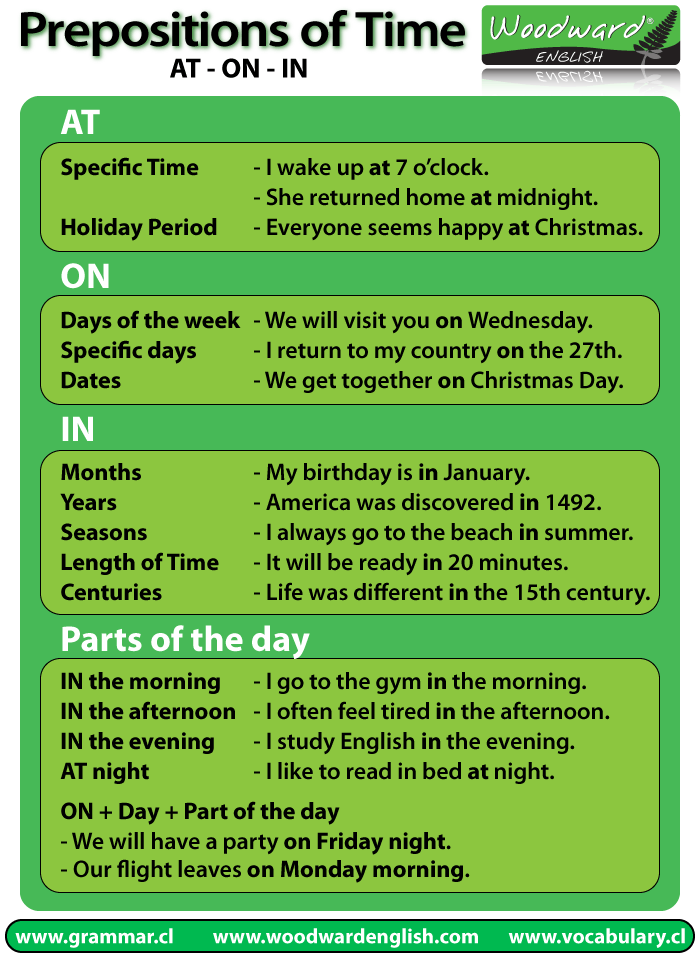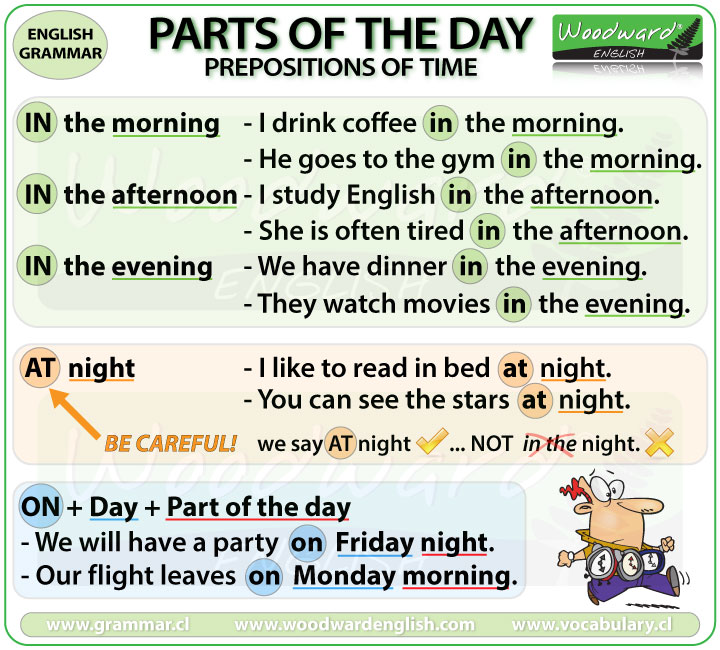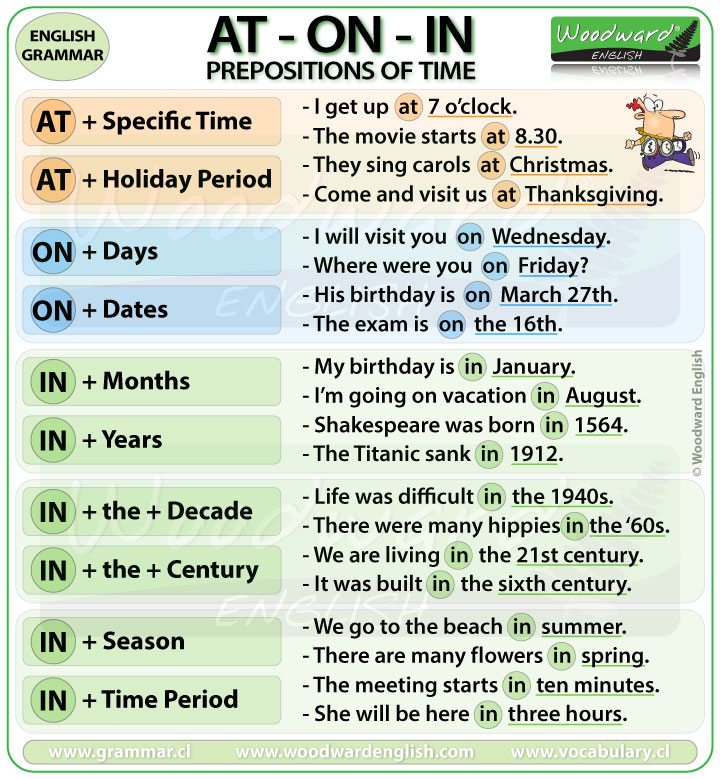LESSON 3.1 | HAVE / HAS
Have - Has -
Go - Goes
Simple Present Tense
Conjugation of Have
and Go
To Have = To show possession / a quality
To Go = to show movement (travel) in a specific direction
Subject
|
To Have
|
The Rest of the sentence
|
I / you / we / they
|
have
|
an old bike.
|
he / she / it
|
has
|
a new car.
|
Subject
|
To Go
|
The Rest of the sentence
|
I / you / we / they
|
go
|
to class every day.
|
he / she / it
|
goes
|
to the movies on Friday.
|
Usually we only add 'S'
to a verb when we conjugate it in the third person but notice how To
Have and To Go are slightly irregular (though they
still both end in S).
Have and Go in
Negative Sentences
To make a negative
sentence in English with To Have and To Go we
use Don't or Doesn't followed by Have or Go (never
Has or Goes).
Affirmative: You have a
pen.
Negative: You don't have a pen.
Negative: You don't have a pen.
You will see that we
add don't between the subject and the verb. We use Don't when
the subject is I, you, we or they.
Affirmative: He has a
pencil.
Negative: He doesn't have a pencil.
Negative: He doesn't have a pencil.
When the subject
is he, she or it, we add doesn't between
the subject and the verb to make a negative sentence. Notice that we don't use
the normal third person conjugation (has, goes) in negative sentences. We use
the base form of the infinitive as seen below.
Word Order of
Negative Sentences
The following is the
word order to construct a basic negative sentence in English in the Present
Tense using Don't or Doesn't.
Subject
|
don't/doesn't
|
To Have*
|
The Rest of the sentence
|
I / you / we / they
|
don't
|
have
|
cereal for lunch.
|
he / she / it
|
doesn't
|
Subject
|
don't/doesn't
|
To Go*
|
The Rest of the sentence
|
I / you / we / they
|
don't
|
go
|
to classes every day.
|
he / she / it
|
doesn't
|
* Verb: The verb that
goes here is the base form of the infinitive = The infinitive without TO before
the verb. Instead of the infinitive To have it is just
the have part.
Remember that the
infinitive is the verb before it is conjugated (changed) and it begins
with TO. For example: to have, to eat, to go, to live, to speak
etc.
Examples of Negative Sentences with Have:
- You don't have
a clue.
- John doesn't have
many friends.
- We don't have
time for a rest.
- It doesn't have
four wheels.
- They don't have
the correct answers.
- She doesn't have
a nice dress.
Examples of Negative Sentences with Go:
- You don't go
to university.
- John doesn't go
to parties.
- We don't go
to work on the weekend.
- It doesn't go
fast.
- They don't go
to the beach.
- She doesn't go
to church.
Questions with Have
and Go
To make a question in
English with To Have and To Go, we normally
use Do or Does at the beginning of the
question.
Affirmative: You have
a girlfriend.
Question: Do you have a girlfriend?
Question: Do you have a girlfriend?
You will see that we
add DO at the beginning of the affirmative sentence to make it
a question. We use Do when the subject is I, you, we or they.
Affirmative: She has
a boyfriend.
Question: Does she have a boyfriend?
Question: Does she have a boyfriend?
When the subject
is he, she or it, we add DOES at
the beginning to make the affirmative sentence a question. Notice that we don't
use the normal third person conjugation (has, goes) in questions. We use the
base form of the infinitive as seen below.
Word Order of
Questions with Do and Does
The following is the
word order to construct a basic question in English using Do or Does.
Do/Does
|
Subject
|
Verb*
|
The Rest of the sentence
|
Do
|
I / you / we / they
|
have
|
a new bike?
|
Does
|
he / she / it
|
Do/Does
|
Subject
|
Verb*
|
The Rest of the sentence
|
Do
|
I / you / we / they
|
go
|
to school?
|
Does
|
he / she / it
|
*Verb: The verb that
goes here is the base form of the infinitive = The infinitive without TO before
the verb. Instead of the infinitive To have it is just
the have part.
Remember that the
infinitive is the verb before it is conjugated (changed) and it begins
with TO. For example: to have, to eat, to go, to live, to speak
etc.
Examples of Questions with Have and Go:
- Do you have a dictionary?
- Does Mary have a
dictionary?
- Do we go to all the
meetings?
- Does she go to all the
meetings?
Short Answers with
Have and Go
In questions that use
do/does it is possible to give short answers to direct questions as follows:
Sample Questions
|
Short Answer
(Affirmative) |
Short Answer
(Negative) |
Do you have a car?
Do you go to church? |
Yes, I do.
|
No, I don't.
|
Do I have time?
Do I go to work today? |
Yes, you do.
|
No, you don't.
|
Do you both have time?
Do you both go to school? |
Yes, we do.
|
No, we don't.
|
Do they have a car?
Do they go to the pub? |
Yes, they do.
|
No, they don't.
|
Does he have a car?
Does he go to university? |
Yes, he does.
|
No, he doesn't.
|
Does she have a car?
Does she go to the gym? |
Yes, she does.
|
No, she doesn't.
|
Does it have four wheels?
Does it go slow? |
Yes, it does.
|
No, it doesn't.
|



